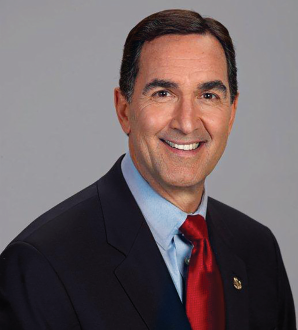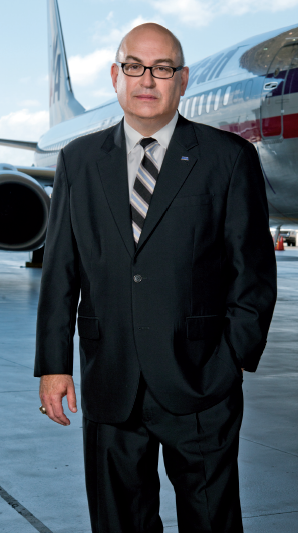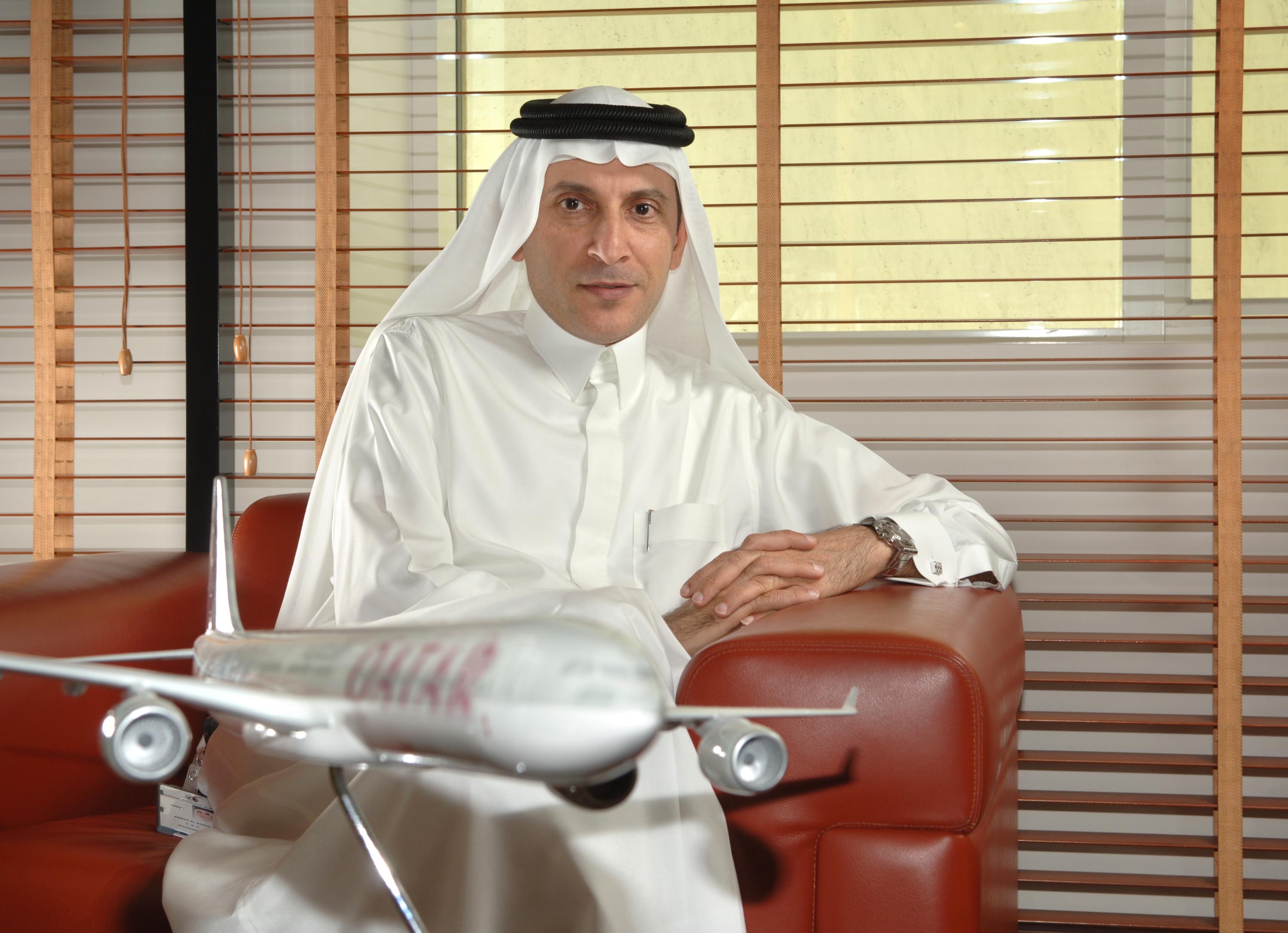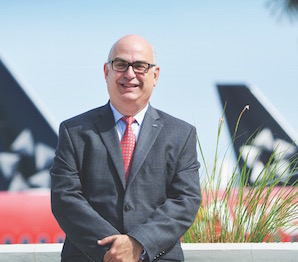Flying high
Flying high



Miami International Airport (MIA) has seen incredible growth in recent years. What is the strategy to keep pace?
Broadening capacity is a priority for this airport and at the core of both our medium and long-term strategies. We service 40 million passengers each year – roughly the population of Argentina – and the airport’s capacity is 50 million; at some point we will run out of space.
To anticipate these needs, we are undertaking a number of major infrastructural upgrades. One project is to build 40 hardstands to park planes. Until recently, air traffic operated on peaks and valleys. You see no arriving flights at 2 a.m., but at 6 a.m. there is a surge of planes. Some of our aircraft, particularly those originating from South America, fly here and go nowhere else. They arrive at, for example, 8 p.m. from Brazil and stay until 11 p.m. Because of American Airlines’ recent reorganization, we no longer have the peaks and valleys, but instead, have constant traffic. Consequently, we no longer have the luxury of avail-able empty gates for us to park idle planes.
We must also accommodate growth in air freight, another important driver in this economy. We operate five airfields. One of them, our training and transition airfield, located in the middle of the Everglades, has a 10,000-foot runway. We are looking to convert that into a cargo airport sometime in the distant future.
What is MIA doing to upgrade its terminals?
We are currently renovating Terminal E, which is part of the central concourse. Interestingly, we are only launching this project as a stopgap measure to buy us time before we can build new structures.
Eventually, Terminals G, F and E will become two terminals. We will start on one end of the airport and work our way in, knocking down terminals along the way. We are looking to break ground on this project in 2020 and it will take 10-15 years to complete the terminal.
Because of its central position within the airport, and because of added traffic from the slew of new flights that American Airlines has announced they will be adding, Terminal E will be where the action is. Subsequently, we are investing in modernizing it. We recently purchased a $90-million train system to improve connectivity within the airport. This will be delivered in the next two years and has a lifespan of 10 years. In the distant future, we are looking to erect a high-end mall, which will have all of the major luxury retailers, in the central terminal.
What are MIA’s plans for broadening connectivity with respect to passenger business?
MIA is the second-largest international passenger airport in the U.S. However, in looking at our existing network there are a number of gaps. With respect to Europe, we need to improve connections with Eastern Europe and Scandinavia. We are looking to develop routes like Warsaw-Miami and Stockholm-Miami.
Asia is another big untapped market for us, in terms of passenger service. We already have cargo business with Asian companies, namely China Air, Korean Air, and Cathay Pacific, and those are usually one-stop flights that go from East Asia to Alaska, refuel and go back. I have spoken to representatives from different Asian carriers, and they all want to come here; it’s not a matter of “if,” but “when.” The “when” will happen when these airlines get new, larger, aircraft, for instance, the Dreamliners. When they start getting A-380s, then we will start to see an increase in Asian traffic coming here.
We are also working on getting flights to Africa. These don’t necessarily have to be through African carriers but could be U.S. airlines with Miami-Johannesburg, Miami-Lagos or Miami-Cairo routes.
MIA is the number one international freight airport in the U.S. What are the growth fundamentals of this segment?Being a gateway city, Miami sees cargo both coming in and going out. Planes arrive full of goods, and the only way they can generate a profit is if they also leave with full loads. From a cargo perspective, Atlanta can’t be Miami because they don’t have much to send back. At MIA, thanks to South Florida’s robust distribution and logistics operations, all of our cargo planes come in full of goods and they leave full as well. They arrive with perishables – flowers, fish, fruit – and depart with high-tech exports, such as electronics, medical technology, mining equipment and automobiles.
How does MIA contribute to job growth and economic diversification in South Florida?
The airport is one of the largest employers in Miami-Dade County, contributing nearly 158,000 direct jobs to the economy annually. It also generates a significant number of indirect jobs in related and peripheral industries, such as tourism, logistics, and manufacturing.
For instance, although it may not be very visible, there is a robust aerospace industry in South Florida. One of the largest airplane manufacturing companies, the Brazilian-based Embraer, has its U.S. headquarters in Ft. Lauderdale. B/E Aerospace, which is headquartered in Palm Beach and manufactures interior cabin products, has more employees than U.S. Southern Command (SOUTHCOM). The French-Italian aircraft manufacturer ATR recently relocated their North American headquarters to MIA from Virginia.
What are the most pressing challenges of operating an airport of this size and significance?
There are a lot of moving parts – some of it operational, some financial. The operational aspect is tied to the fact that we have over 90 airlines that fly out of here and they need a lot of care. We also have over 200 concession locations, which would make us one of the largest malls in the U.S., as well as related businesses such as a hotel, parking facilities, etc.
On the financial side, MIA is the largest economic engine – not just in Miami-Dade County, but in the U.S. Southeast, from Washington, D.C., down. To put this in perspective, we generate $1 billion more revenue than Hatsfield-Jackson Atlanta International Airport; we are bigger than Disney World and bigger than the Tennessee Valley Authority. When you generate that much wealth and economic business, everyone wants a piece of the action. Consequently, I get lobbied frequently and must ensure that proper procedures, when it comes to bids, are enforced at all times.
What is your strategic vision for MIA and your outlook on South Florida’s economy?
Currently, Miami-Dade is the Gateway to Latin America. Ultimately, our goal is to transform it to a global hub. We have the fundamentals to support this – strong tourism, real estate, logistics and banking industries – and MIA’s capital projects will only boost this progression.

Emilio T. González Director – Miami-Dade Aviation Department

How has the strengthening U.S. dollar impacted passenger air traffic?
Our numbers have dipped as a result of the currency exchange rates, particularly when it comes to Latin American visitors. At the same time, we are expanding into new markets and seeing more diversification in our passenger lists. The net result was that 2015 was our best year for passenger growth, with 3 million more travelers year-over-year and a new record of 44.3 million annual passengers. Last year, Miami International Airport (MIA) also added eight new airlines and is now home to 101 carriers—the most of any U.S. airport. Additionally, MIA welcomed ve new international nonstop passenger routes: Cordoba, Argentina; Istanbul, Turkey; Manchester, England; Monterrey, Mexico; and Vienna, Austria. These developments speak to the fact that Miami is becoming more than just the Gateway to the Americas but the new gateway to the world.
For Miami-Dade’s business community, deepening ties with China is a top priority. What is MIA doing to facilitate direct air connection to the country?
Miami is the furthest geographic point from China in the mainland U.S., posing a significant barrier to bringing direct flights from China here. MIA’s strategy is not strictly focused on generating traffic to China, but building connectivity to Asia. Our studies show that mainland China on its own would not generate enough traffic to route a direct flight there, as they project that passengers from the country would only make up 25 percent of the demand for Miami-bound flights. However, Japan, South Korea, the Philippines, Indonesia, Vietnam and other Asian countries boast tremendous potential to fill planes. We are presently engaging with Asian air carriers that are investing significantly in ultra-long haul aircraft and looking to expand their routes, such as EVA Airways and Cathay Pacific.
In 2015, MIA was designated by the International Air Transit Association (IATA) as a pharmaceutical freight hub. What is the impact of this distinction?
Pharmaceutical air cargo is a huge industry, and so far we have only captured a small portion of it. In 2015, we became the first airport in the U.S.—and only the second in the world—to be IATA-certified as a pharma hub. In early 2016, MIA hosted our first, and well attended, workshop for key pharma stakeholders. This fits perfectly with our strategic plan to grow and diversify our cargo facilities. Pharma cargo at MIA has grown 80 percent in the last ve years. And with this designation, and the partnerships we’ve developed with our freight forwarders and customs brokers, I think we are well positioned to capture a huge portion of the lucrative global pharma business.
In 2015, Embraer celebrated its 36th year in South Florida. Embraer’s arrival in Florida was our rst step toward globalization by establishing our U.S. presence. The U.S. was the most important aviation mar- ket at the time, and North America continues to be the strongest global market for Embraer aircraft. We arrived with a vision to become a major player in global aerospace and are now the highest aggregate value exporter in Brazil, a traditional commodities exporter.
For us, 2015 was filled with milestone achievements, notably a record sales order book value of $22.9 billion and the highest delivery volume of business and commercial aircraft in five years. Last year, Florida was key to the 10th anniversary of our executive jets business, launched in 2005 as a pillar of our diversification strategy. Since 2011, we have produced over 130 executive jets, valued at over $1 billion, in Florida. Most of these jets operate in the U.S., but we have also exported aircraft from Florida to 12 other countries. In 2013, we established a production facility for our defense and security business in Florida, and last year, it achieved its primary goal of delivering the first light-attack aircraft to the U.S. Air Force for Afghanistan.
To sustain global competitiveness, investment in innovation, research and development, new technologies and process enhancements.
Our corporate presence in South Florida is critical to our business development activities across the world. Over the last three decades we have witnessed Miami’s evolution from a hub of the Americas to a global platform for international business. As more businesses, industries and aviation companies recognize Miami’s key role in the global market, we will see more customers for commercial and business aircraft in our community.
 Two years ago, American Airlines merged with US Airways, becoming the largest airline in the world. Since then, our efforts have been centered on becoming the greatest airline in the world for our customers, employees, stakeholders and partners.
Two years ago, American Airlines merged with US Airways, becoming the largest airline in the world. Since then, our efforts have been centered on becoming the greatest airline in the world for our customers, employees, stakeholders and partners.
Miami International Airport (MIA) is our third-busiest hub, following Dallas/Fort Worth and Charlotte, and our largest hub for international flights. We continued to pursue growth in this vibrant city. Just last year, we added six new destinations from MIA: San Antonio, Austin, Kansas City, Salt Lake City, Barranquilla, Colombia and Monterrey, Mexico. But our growth is not just measured by the number of flights and destinations we serve; it is also seen in the number of widebody aircraft—that is, double-aisled planes—we operate at MIA. Each widebody added to our hub has a significant economic impact, contributing, on average, 16 new pilots and 45 flight attendants.
As the largest airline operating at MIA, accounting for roughly 70 percent of tra c and servicing a high volume of international passengers, it is more important than ever to ensure our processes are streamlined. Technology is playing a key role, from online check-in, to the free mobile passport app that allows U.S. and Canadian citizens to be granted clearance within four seconds of arriving at U.S. Customs. American’s crewmembers are provided with Global Entry, which further eases the e ect of our people on the Customs and Border Protection system. We are also working to create more exit lanes and recently began connecting international baggage, thus easing the ow for international customers arriving to or transiting through MIA.
MIA remains important to American’s present and is key to our future success. Apart from its strategic location, what makes Miami unique is the supportive, collaborative spirit of the government and the business community. In the past couple of decades, American Airlines and the Greater Miami area have both experienced incredible growth. And, looking ahead, we see a promising future for both.